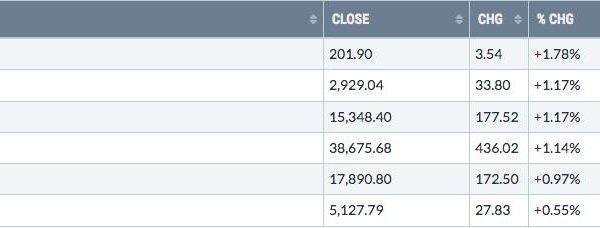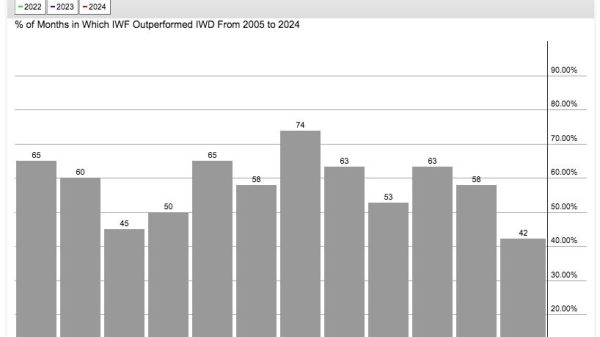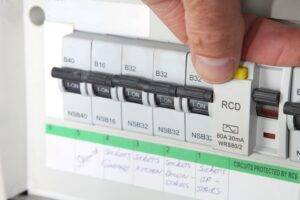Welcome to the ultimate guide on where to position your consumer unit in the UK for optimal safety and convenience.
Whether you’re a homeowner or a business owner, ensuring that your consumer unit is correctly placed is essential for protecting your property, appliances, and most importantly, the people inside. In this comprehensive article, we’ll explore the various factors to consider when determining the best location for your consumer unit.
Understanding the Regulations and Guidelines for Consumer Unit Placement in the UK
Safety is paramount when it comes to electrical installations, and the correct positioning of your consumer unit plays a vital role in minimising potential hazards. In the UK, there are specific regulations and guidelines outlined by governing bodies such as the Institute of Electrical Engineers (IEE) and the British Standards Institution (BSI) that you must adhere to.
One of the primary considerations is the proximity of the consumer unit to the main electrical intake point. The consumer unit should be located as close as possible to the intake point, typically where the electricity meter is installed. This ensures that the length of electrical cabling is minimised, reducing the risk of damage or electrical faults.
Additionally, the consumer unit should be easily accessible for maintenance and inspection purposes. It should be positioned at a suitable height, typically between 1.2 and 1.5 meters from the floor, to ensure it can be reached comfortably. This accessibility allows for quick and easy access during emergencies or when conducting routine checks.
Factors to Consider When Choosing a Location for Your Consumer Unit
When deciding on the placement of your consumer unit, there are several factors to consider. These factors will help you determine the most suitable location that balances safety and convenience. Here are some key considerations to keep in mind:
Proximity to the main electrical intake: As mentioned earlier, it is crucial to position the consumer unit near the main electrical intake point to minimise cable lengths. This reduces the risk of electrical faults and makes it easier to trace and rectify any issues that may arise.
Accessibility: The consumer unit should be easily accessible for maintenance and inspection. Consider the ease of reaching the unit, especially during emergencies. Ideally, it should be located in an area where it can be reached without obstacles or the need for climbing stairs or ladders.
Ventilation: Consumer units generate heat, especially when electrical circuits are in use. It is important to ensure that the chosen location provides adequate ventilation to prevent overheating. Avoid placing the unit in confined spaces or areas with poor airflow.
Protection from environmental factors: Consider the surroundings of the chosen location. Ensure that the consumer unit is protected from moisture, extreme temperatures, and other environmental factors that could potentially damage the unit or compromise safety.
Future expansion and flexibility: Plan for future needs and potential expansions of your electrical system. Choose a location that allows for easy modifications and additions to the consumer unit if necessary. This will save you time, effort, and potential disruption in the future.
By carefully considering these factors, you can make an informed decision about the best location for your consumer unit that prioritises safety and convenience.
Ideal Locations for Consumer Units in Residential Properties
Now that you understand the regulations and factors to consider, let’s explore some of the ideal locations for consumer units in residential properties.
Utility room: Many homeowners choose to position their consumer units in utility rooms. Utility rooms are often near the main electrical intake, providing easy access and minimising cable lengths. Additionally, the room’s purpose aligns with the need for quick access during emergencies or when conducting maintenance checks.
Garage or basement: If your property has a garage or basement, these can be suitable locations for your consumer unit. They often have adequate space and ventilation, offering a convenient and accessible spot. Ensure proper protection from moisture and consider installing the unit on a raised platform to prevent potential water damage.
Under the stairs: The space under the stairs is often unused or utilised for storage. It can be an excellent location for a consumer unit, as it is typically centrally located in the house. This placement allows for shorter cable runs, reducing the risk of electrical faults. However, ensure that the area is well-ventilated and easily accessible.
Remember, these are just some of the ideal locations. The specific layout and requirements of your property may influence the best placement for your consumer unit. It is always recommended to consult with a professional electrician to assess your property’s unique needs and determine the most suitable location.
Common Mistakes to Avoid When Selecting a Location for Your Consumer Unit
While it’s important to know the ideal locations for consumer units, it’s equally crucial to be aware of common mistakes to avoid. These mistakes can compromise safety, accessibility, and convenience. Here are some common pitfalls to steer clear of:
Placing the consumer unit in a bathroom or shower room: Bathrooms and shower rooms are high-moisture areas. Installing a consumer unit in such locations is strictly prohibited due to the risk of electric shock and damage to the unit. Always ensure the consumer unit is positioned in a dry area.
Positioning the consumer unit behind furniture or in hard-to-reach areas: Accessibility is key when it comes to consumer unit placement. Avoid positioning the unit behind furniture or in areas that are difficult to reach. This can impede quick access during emergencies or routine checks, potentially delaying response times or causing inconvenience.
Installing the consumer unit in confined spaces without proper ventilation: Consumer units generate heat, and adequate ventilation is essential to prevent overheating. Placing the unit in confined spaces without proper airflow can lead to electrical faults and compromise the lifespan of the unit. Ensure the chosen location allows for adequate ventilation and heat dissipation.
Neglecting future expansion and flexibility: While it’s important to choose a suitable location for your current needs, it’s equally crucial to consider future expansions or modifications. Neglecting this aspect may result in the need to relocate the consumer unit or make significant modifications down the line. Plan ahead and choose a location that allows for flexibility and easy modifications if required.
Avoiding these common mistakes will help ensure that your consumer unit is positioned optimally, prioritising safety, accessibility, and convenience.
Step-by-Step Guide to Installing a Consumer Unit in the Chosen Location
Once you’ve determined the best location for your consumer unit, it’s time to install it. While this task is best left to a professional electrician, it’s still helpful to understand the general steps involved. Here is a step-by-step guide to installing a consumer unit in your chosen location:
Turn off the electricity: Before starting any electrical work, ensure that the electricity supply to the property is switched off. This step is crucial for your safety and the safety of anyone else present during the installation.
Prepare the chosen location: Clear the chosen location of any obstructions and ensure it is clean, dry, and adequately ventilated. This step is essential for preventing any potential damage to the consumer unit and ensuring proper heat dissipation.
Mount the consumer unit: Install the consumer unit according to the manufacturer’s instructions. This typically involves securely attaching it to a wall or surface using appropriate fixings. Ensure that the unit is level and positioned at the recommended height for easy access.
Connect the electrical cables: Follow the wiring diagram provided by the consumer unit manufacturer to connect the electrical cables. It is crucial to follow proper wiring practices and use the correct tools to ensure a safe and secure connection.
Test the installation: Once the consumer unit is installed and the electrical cables are connected, it’s time to test the installation. Switch on the electricity supply and check for any signs of electrical faults, such as sparks, smoke, or unusual sounds. If everything appears normal, proceed with further testing and verification as per the manufacturer’s instructions.
Label the circuits: To ensure easy identification and maintenance in the future, label each circuit in the consumer unit. This labelling will help you and any future electricians quickly identify the purpose and corresponding breaker for each circuit.
While this step-by-step guide provides a general overview, it is essential to remember that consumer unit installation should be purchased from a UK based electrical supplier and carried out by a qualified and experienced electrician. They have the expertise and knowledge to ensure a safe and compliant installation.
Safety Considerations and Precautions for Consumer Unit Placement
Safety should always be the primary concern when it comes to consumer unit placement. Here are some additional safety considerations and precautions to keep in mind:
Use a qualified electrician: Always hire a qualified and registered electrician for consumer unit installation and placement. They have the necessary skills, knowledge, and experience to ensure a safe and compliant installation.
Install Residual Current Devices (RCDs): RCDs provide additional protection against electric shock and should be installed alongside the consumer unit. These devices monitor the flow of electricity and quickly disconnect the circuit in the event of a fault, reducing the risk of injury or damage.
Regular maintenance and inspections: Consumer units should be regularly inspected and maintained to ensure their continued safety and functionality. Schedule periodic checks with a qualified electrician to identify and address any potential issues before they escalate.
Keep the area around the consumer unit clear: Avoid storing or placing objects near the consumer unit that could obstruct access or hinder ventilation. Keep the surrounding area clear to ensure easy and safe maintenance, as well as proper heat dissipation.
Educate household members or employees: Ensure that everyone in your household or workplace understands the importance of consumer unit safety. Educate them on basic electrical safety practices, such as not overloading sockets and reporting any electrical issues promptly.
By following these safety considerations and precautions, you can significantly reduce the risk of electrical hazards and maintain a safe environment for everyone.
Upgrading or Relocating an Existing Consumer Unit: Things to Keep in Mind
If you already have a consumer unit installed but are considering an upgrade or relocation, there are a few important factors to keep in mind:
Consult with a professional electrician: Before making any decisions, consult with a qualified electrician. They will assess your current consumer unit and provide expert advice on whether an upgrade or relocation is necessary or beneficial.
Consider the age and condition of the existing consumer unit: If your consumer unit is old or outdated, an upgrade may be necessary to ensure compliance with current regulations and safety standards. Similarly, if the unit is damaged or showing signs of wear, relocation may be the best option.
Assess the wiring and cable lengths: When considering a relocation, assess the existing wiring and cable lengths. Determine if any modifications or rewiring will be required to achieve the desired location. This will help you understand the scope of the work and associated costs.
Plan for potential disruptions: Depending on the extent of the upgrade or relocation, there may be temporary disruptions to your electrical supply. Discuss the timeline and any necessary preparations with your electrician to minimise inconvenience.
Ensure compliance with current regulations: Any upgrades or relocations should comply with the current regulations and guidelines. A professional electrician will ensure that the work meets the necessary safety standards and is signed off accordingly.
By considering these factors and working closely with a qualified electrician, you can successfully upgrade or relocate an existing consumer unit while maintaining safety and compliance.
Hiring a Professional Electrician for Consumer Unit Installation and Placement
Consumer unit installation and placement are tasks that should always be carried out by a qualified and registered electrician. Hiring a professional ensures that the work is completed safely, accurately, and in compliance with the regulations. Here are some key reasons why you should hire a professional electrician:
Expertise and knowledge: Professional electricians have the necessary expertise and knowledge to handle consumer unit installations. They are familiar with the regulations and guidelines, ensuring compliance and safety.
Insurance and warranty: When you hire a professional electrician, you gain the added benefit of insurance coverage and warranties. This provides peace of mind, knowing that any potential issues or damages will be taken care of.
Efficiency and accuracy: Electricians have the experience and tools to complete the installation efficiently and accurately. They can handle any challenges that may arise, ensuring a smooth and hassle-free process.
Compliance with regulations: A professional electrician will ensure that the consumer unit installation complies with all relevant regulations and standards. This is essential for the safety of your property and everyone inside.
Advice and recommendations: Electricians can provide valuable advice and recommendations based on their experience and expertise. They can guide you in choosing the best location for your consumer unit and offer insights on future expansions or modifications.
When it comes to newconsumer units, installation and placement, investing in a professional electrician is the best decision you can make. Their knowledge, expertise, and commitment to safety will ensure that your consumer unit is installed correctly and safely.
Conclusion: Choosing the Best Location for Your Consumer Unit for Safety and Convenience
In conclusion, the correct placement of your consumer unit is crucial for optimal safety and convenience. By understanding the regulations, considering key factors, and avoiding common mistakes, you can make an informed decision on the location that best meets your needs. Whether you choose a utility room, garage, basement, or under the stairs, ensure that the chosen location adheres to safety standards and allows for easy accessibility.
Remember to always hire a qualified electrician for consumer unit installation and placement. Their expertise will ensure a safe and compliant installation, providing you with peace of mind. Regular maintenance, inspections, and adherence to safety precautions further contribute to a secure electrical system.
With this ultimate guide, you now have the knowledge and understanding to position your consumer unit in the UK for optimal safety and convenience. Prioritise safety, consult with professionals, and enjoy the peace of mind that comes with a well-placed and properly installed consumer unit.























